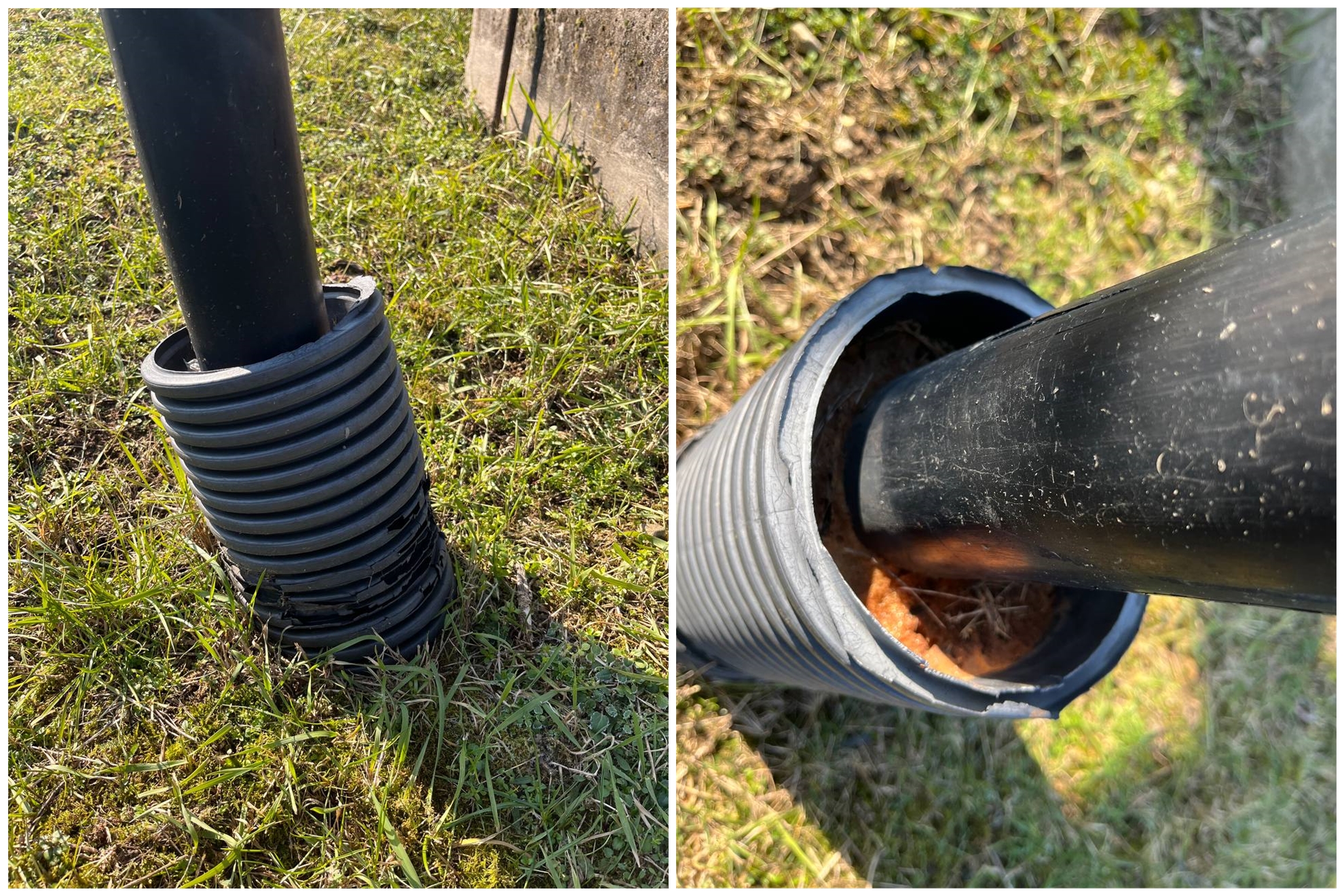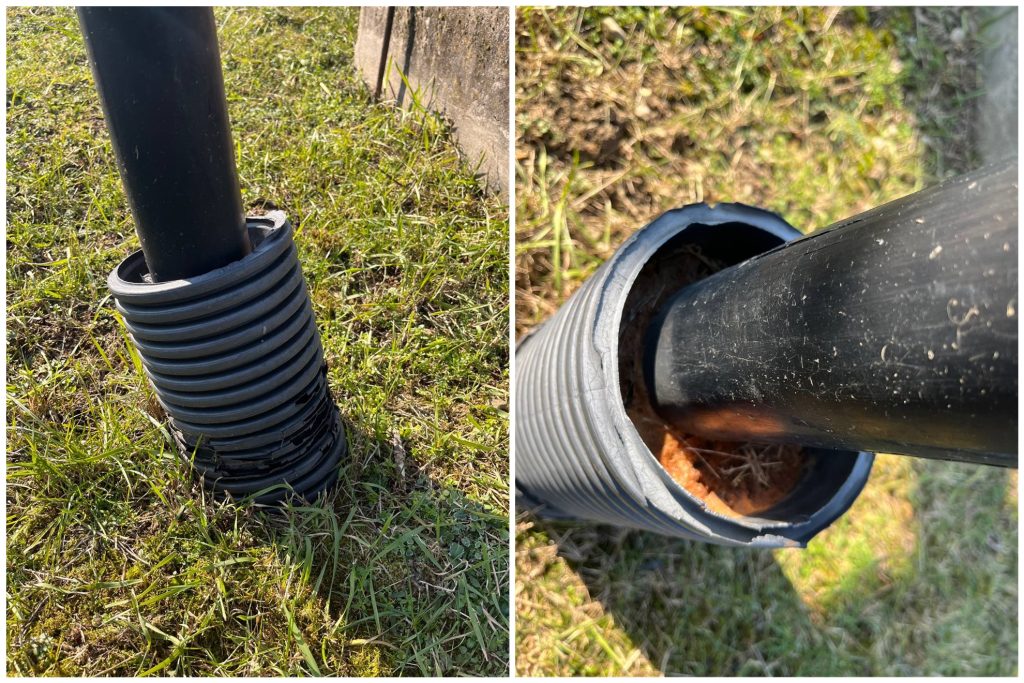
Bad cable protection on the ground level

The photos show the exit point of the high voltage single-core cable from the ground near the cable ternination. Please note that the cable is placed in a black single-layer corrugated pipe. What’s wrong here?
1️⃣ Corrugated pipe is not a reliable mechanical protection for high-voltage cable. For example, pay attention to the deep cuts in this pipe near the very surface of the ground – these are traces of a trimmer that the substation staff mowed the grass with.
2️⃣ Conventional corrugated pipes are combustible and are not intended for use in conditions of solar radiation. Such pipes turn into dust after 3-5 years of operation. If corrugated pipes are to be used, then they must be highly resistant to flame propagation and UV exposure.
3️⃣ It is necessary to protect the cable on a longer section, and not only at a height of 15-20 cm above the ground.
4️⃣ The end of the pipe can not be sealed with mounting foam, because it is not designed to work in conditions of exposure to precipitation and the sun. As a result, such foam will quickly turn into dust. The photo shows that the foam has already turned yellow and degraded to a porous structure that sucks water. The pipe end must be closed not with foam but with special factory-made O-rings or a heat-shrinkable tube.
I took these photos in the spring of this year at a substation in one of the European countries. It makes no sense to name the country, because the situation, frankly, is very common in many countries. It is a pity that we have used the wrong cheap solutions to protect high-voltage cable lines, the cost of which sometimes reaches 1 million euros for each kilometer of the route.
